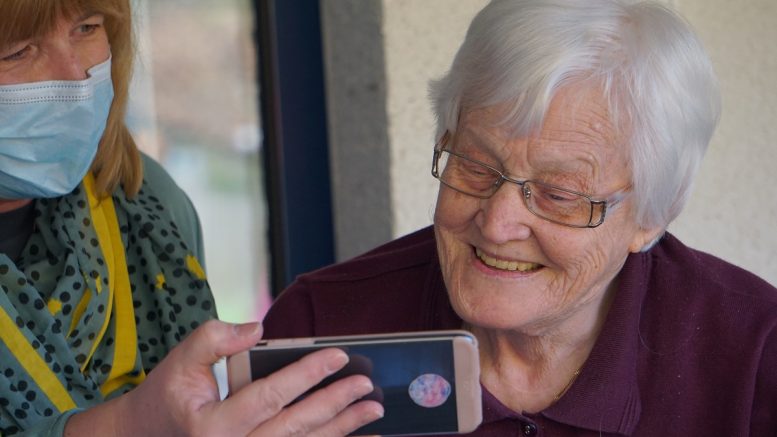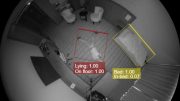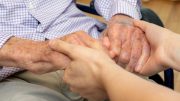Following data published last month by the Care Quality Commission (CQC), it was revealed that COVID-19 deaths in care homes could be higher than Government figures show. A total of 29,017 deaths were originally recorded in care homes in England from April 10th, 2020 to March 31st. However, this figure is likely to be higher, per The Sunday Telegraph, as deaths that occurred during that period – almost three weeks after the UK went into the first national lockdown – were not being listed as COVID-related.
The numbers released by CQC show that more than 39,000 care home residents died with the virus, with the highest number of deaths in a single care home at 44, while 21 homes had more than 30 COVID-related deaths.
Also, it was not until April 15th, 2020 that discharged patients were being tested for the virus before going into care homes. Moreover, according to correspondence seen by the Sunday Telegraph between a care home manager and the CQC’s information access team, death records in the nine days leading up to April 10th show that 7,775 deaths were reported in this period.
This figure is 4,190 higher than the same period the year before – hinting that the number of people that died with coronavirus in care homes over the year to the end of March is at least 43,000.
Families who have been campaigning to get the data released say it is vital to have transparency about what happened. The CQC says it has not found a link between standards of care in care homes and the number of deaths.
The regulator adds that many factors are involved, including the levels of COVID-19 in a local community and the age and health of the residents.
The findings from briefings were amplified by personal accounts from bereaved families, who had not been able to be with their loved ones when they died. Care home managers and staff have spoken out about their experiences of being overwhelmed, becoming sick themselves, and the lack of adequate access to personal protective equipment (PPE) or testing.
However, such an increased mortality rate could have been prevented if fully integrated technology, with transparent cutting-edge digital care plans accessible to family and friends, medical surrogates and other clinicians, were utilised by care providers across the country.
Professor Stuart Solomans, founder of Ernie Connects, contacted 28 Government departments, including Martin Green, Chief Executive of Care England, at the beginning of the epidemic offering them the Ernie software for free as it was clinically proven to save lives.
Ernie Connects is the only fully integrated resident-centred care system in the UK, with combined best-of-breed technology from the United States and the UK creating the country’s first fully integrated platform.
Studies from the USA show that when a video communications system is provided for residents and their families and friends, 24 hours a day, it drives quality care through connection and subsequently increases occupancy rates from the low-mid 80s to the high-mid 90s.
Barely touched on in media reports were the concerted efforts over many years to ensure care home residents could be supported when sick or dying and not taken to busy, alienating hospitals; or the growing problem, before the pandemic, of people needing transfers back to care homes and being stranded in hospital, sometimes for weeks. Even before the pandemic, we in health and social care had repeatedly highlighted the crisis in care home capacity, staffing, funding, financial viability, and inconsistent support from overstretched local NHS services not adequately resourced for the job.
This is where digital care technology could have been utilised as an invaluable tool to ease the growing pressures in care facilities. Integrated platforms should have the continuous ability to remotely measure all of a resident’s vital signs; blood pressure, heart rate, breathing rate and temperature. Currently, there is limited care home systems available that allow residents to have any time video consultations with doctors and nurses.
Technology approved by The National Institute for Health and Care Excellence and trusted by the NHS, should be integrated into every care home in the UK to relieve pressure and improve care. Ultimately, remote patient monitoring/managing is only achievable when you have the instant ability to access residents’ vital signs.
The mainstream media narrative around COVID-related deaths in care homes became one of cruel bureaucrats, politicians, and managers callously abandoning care home residents from preventable deaths, and knowingly sacrificing residents to “protect” acute hospital beds.
According to research, hospitals are guilty of deliberately sending back residents to care homes without a COVID-19 test or even after positive ones. Moreover, discharges from hospitals back to care homes increased year on year during a critical period in March 2020, despite claims from the Government and NHS Providers that discharge numbers from hospitals to care homes had been much lower in previous years.
Through the implementation of innovative technology, this could have been avoided entirely as such software has the ability to enable residents to arrange a video consultation with a doctor within a very short period, which is critically important and a huge time saving opportunity for the care home. Moreover, digital care technology can provide an early intervention and is shown to drive huge increases in satisfaction from friends and family. An increase in the quality of care and CQC ratings will naturally follow these improvements.
Indeed, part of the focus on implementing escalation plans was to prevent hospitals from being overwhelmed. Still, part of the problem was the focus on more ambulatory emergency care, and close collaboration with community health services to enhance support and speed.
And as a result, care homes have struggled immensely throughout the pandemic to obtain basic assistance and equipment. Caregivers have struggled to find PPE and testing supplies. Meanwhile, staff shortages have made it difficult to execute infection control policies.
An article in The New York Times suggested that many coronavirus deaths in American care homes could have been prevented had their government stepped in and ensured that social care facilities had the same level of support as hospitals.
Such was an outcome that Ernie Connects saw from afar and decided to act upon in the UK. Unfortunately, despite reaching out to 28 Government departments and offering Ernie software for free, nobody decided to come back.
This is despite findings from pre-and-post satisfaction studies in the United States amongst carers and care home staff showcasing a measurable increase in staff retention and efficiency, as well as much lower agency staff usage.
It’s axiomatic that the ability of the carer to relate on a visual and personal basis with the resident’s family and friends encourages social ‘stickiness’. As a result, this facilitates a much stronger interpersonal bond if all parties can be involved in the dialogue of the resident’s care journey, resulting in greater levels of satisfaction and less commoditisation of the resident. It is a sociological phenomenon that the better you get to know the relatives of the resident, the greater the rapport and a higher standard of care.
Fully transparent leading-edge digital care plans can be accessed by all parties to recommend improvements, provide audibility and assist in the management and care of the resident.
Over the past 18 months, billions of pounds have been invested in emergency aid since the start of the pandemic. A lot of that money has gone to facilities that have terrible safety records and a history of violations. Operators of private nursing homes have reportedly used these funds for activities outside of securing the safety of nursing home residents. Some funds have even gone to lobbying efforts for additional funding and policies that are more favourable to the industry.
However, safety advocates have said the way to avoid litigation is simple – help care homes protect residents from dying needlessly. Instead, some of those operating in the care sector seem to be facing less accountability rather than more.
During these uncertain times, many families are unsure where to turn for help when they have concerns regarding the quality of welfare in care homes. That is why Ernie Connects was developed. Our ethos is to build a thriving, streamlined ecosystem of care that ensures a more efficient and sustainable business model for care providers and a better quality of life for the resident and their families.
Of course, this pandemic is still far from over. In the UK reports state that we’re still seeing new COVID-19 cases surge with over 20,000 new cases daily, while deaths remain at about 89 a day. Also, the rapid spread of new variants, in particular the B117 variant, demonstrates that the virus isn’t going away anytime soon.
It becomes clear, then, that if we, as a sector, are serious about reducing the rate of further mortality, while simultaneously striving to promote healthier, happier lives for residents, then we must look towards championing human connection through smart technology.
About the author
Stuart Solomons is the founder of Ernie Connects. He is a former professor and a member of the American Telemedicine Association and also a member of the Health Information Management Systems and Society (HIMSS).





